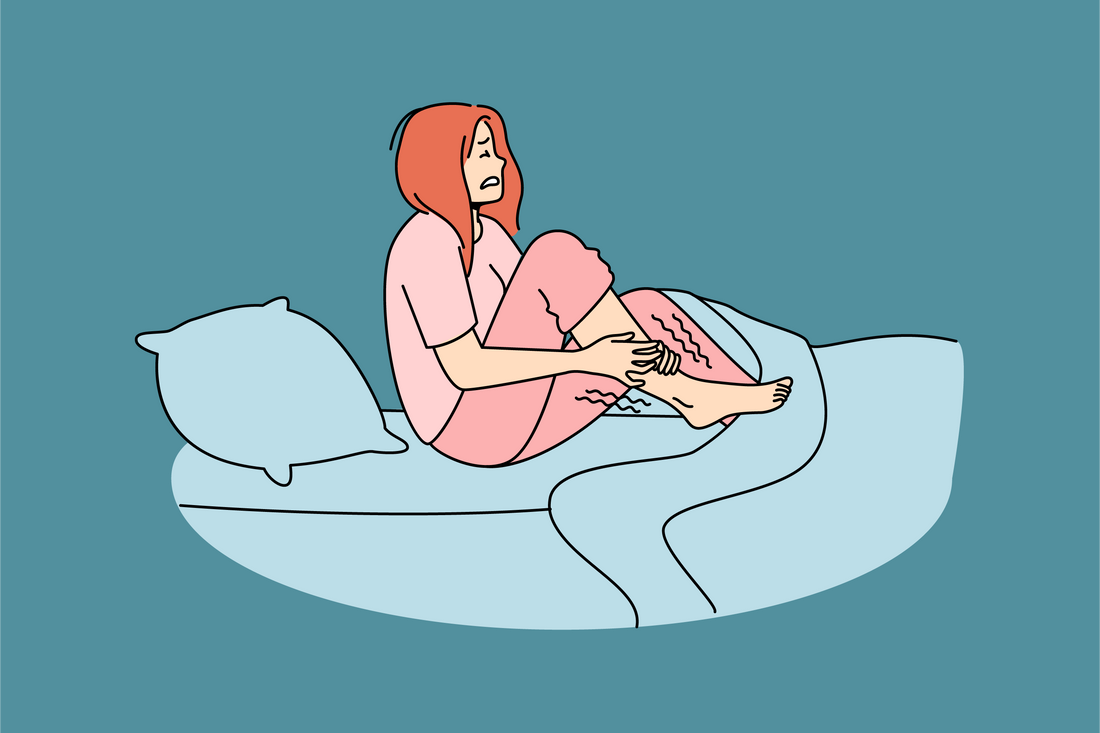
Share
Restless Leg Syndrome. What can be done?
What is Restless Leg Syndrome (RLS)
Also known as Willis-Ekbom disease, RLS is a neurological condition characterized by an uncontrollable urge to move the legs. This urge typically occurs during periods of rest or inactivity, particularly in the evening or at night, and is often accompanied by uncomfortable sensations described as crawling, tingling, pulling, or throbbing.
The exact cause of RLS is not fully understood, but it is thought to involve imbalances in dopamine, a neurotransmitter that helps regulate muscle movements. The condition can be hereditary, and several genes have been associated with RLS. Additionally, it can be exacerbated or triggered by other factors such as iron deficiency, kidney failure, pregnancy, and certain medications.
Individuals with RLS describe a relief of these unpleasant feelings through movement like pacing, stretching, or shaking the legs. Symptoms can vary from mild to intolerable and can significantly impact the quality of life by disrupting sleep and daily activities. The diagnosis of RLS is based on patient history, symptoms, and ruling out other conditions.

Conventional treatment for RLS
As there is no gold standard treatment for RLS, physicians personalize their treatment plan based on the severity and frequency of symptoms, patient medical history, and potential side effects. Iron deficiencies have been linked to RLS which may lead to supplementation and therefore alleviate symptoms. Other treatments include lifestyle changes; moderate exercise, improved sleep hygiene and sometimes medications such as dopamine agonists, anticonvulsants, or benzodiazepines for symptom relief.
Up-To-Date treatment for RLS
Modern treatments include both pharmacological and non-pharmacological approaches. Medication developments include dopamine agonists and alpha-2-delta calcium channel ligands, such as gabapentin, pregabalin, or gabapentin enacarbil, as these have been shown to be effective for some patients. Some of these medications however can be habit forming or lead to dependence, especially in individuals that suffer from anxiety, depression or insomnia.
Non-drug therapies are also gaining popularity and are regarded as a safer alternative. Pneumatic compression devices and vibratory pads provide relief by stimulating the legs. New research is looking into the use of transcranial magnetic stimulation (TMS) and near-infrared spectroscopy, with some studies showing potential benefits. Lifestyle modifications and cognitive-behavioural therapy also remain central in managing symptoms. Iron supplementation continues to be important for those with a deficiency.
What you can do to improve the effects of RLS
Avoid alcohol as it may worsen RLS in the long run, as can caffeine, so both should be limited or eliminated.
Simple and inexpensive, tonic water contains quinine which may provide relief for some, due to its muscle contraction inhibition properties.
Avoid large meals at night as this may trigger RLS symptoms due to the digestive process, especially if indigestion occurs when laying on your back. A high-protein snack before bed may alleviate symptoms. Some snack ideas to consider:
- Cheese
- Chicken or Turkey
- Leafy greens + banana smoothie
- Boiled egg
- Almonds
Avoid large meals at night as this may trigger RLS symptoms due to the digestive process, especially if indigestion occurs when laying on your back. A high-protein snack before bed may alleviate symptoms. Some snack ideas to consider:
Applying warm compresses or taking a bath before bed. Gentle leg stretches or massage. Establish a regular sleep schedule and ensure good sleep hygiene is key. Some have found relief with relaxation techniques, such as yoga or deep breathing exercises.

